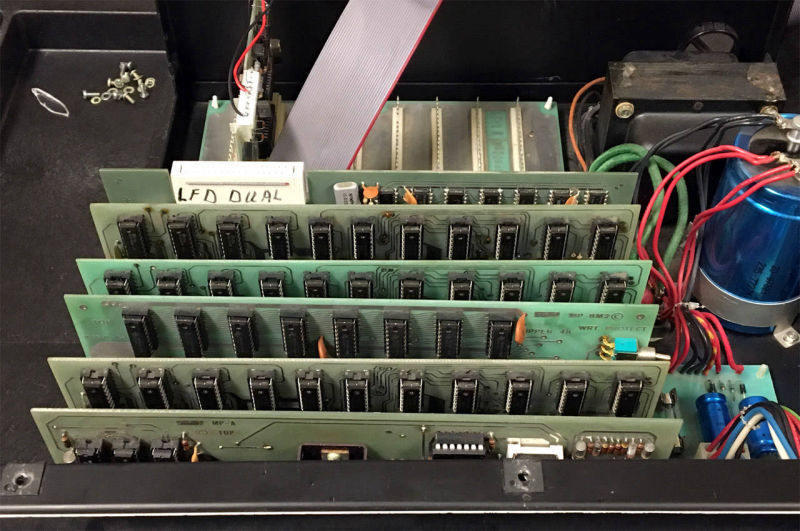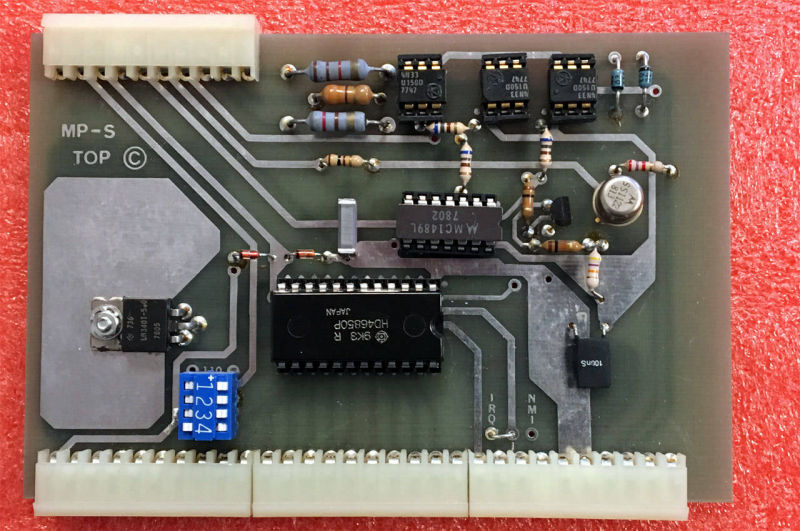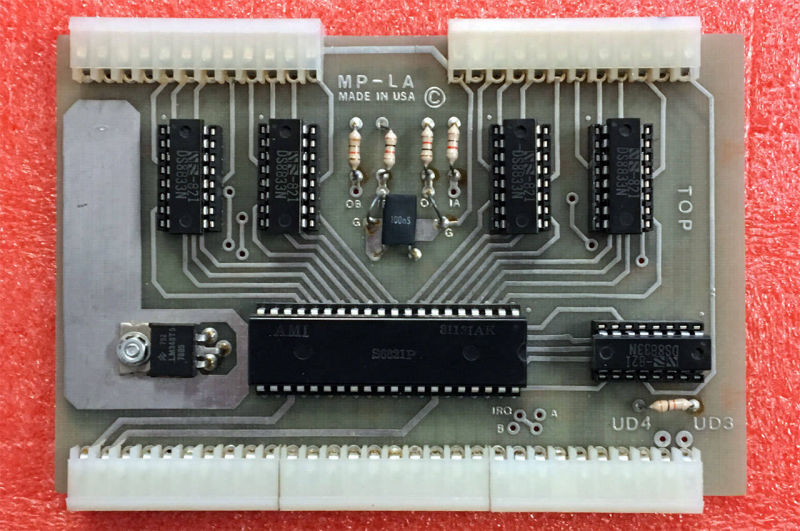In late 1977, a third-party company, Percom, introduced the LFD-400 floppy disk system for the SWTPC 6800. About this same time, SWTPC also introduced their MF-68 floppy disk system. These were the first floppy disk options available for the SWTPC 6800. Unfortunately for SWTPC, similar floppy disk options had been available for S-100 computers for over a year prior to these releases, resulting in a loss of market share for SWTPC during this time.
The Percom design directly paralleled the popular North Star floppy disk system that was introduced about one year earlier. They both used the new 5.25" mini-disk drive from Shugart, they both used a hard sector controller, and both used 10 hard-sector media with 256 byte sectors and 35 tracks. This provided 89,600 bytes of formatted storage per diskette.
Even the disk operating systems provided with the Percom and North Star floppy disk systems were similar. North Star DOS and MPX/MiniDOS from Percom were primitive operating systems that provided little more than the ability to load and save programs to and from memory. However, there was one significant difference between the two DOS implementations: Percom chose to put its MPX/MiniDOS in EPROM on the floppy disk controller rather than waste space on the small capacity diskettes. This also meant RAM wasn't used for the DOS and the DOS was protected from runaway code in EPROM. Finally, it also meant a working boot disk was not a requirement for operation - a disk was never anything more than a data disk.
The SWTPC 6800 and Percom LFD-400 in action can be seen in a few of the videos in this
video playlist.
 Front View
Front View Rear View
Rear View AC-30 Cassette Interface
AC-30 Cassette Interface Cover Off
Cover Off MP-A CPU Board
MP-A CPU Board CPU Rear View & Mods
CPU Rear View & Mods MP-M 4K Static RAM
MP-M 4K Static RAM 4K Mod for $8000-$FFFF
4K Mod for $8000-$FFFF MP-8M 8K Static RAM
MP-8M 8K Static RAM MP-S Serial Interface
MP-S Serial Interface MP-LA Printer Interface
MP-LA Printer Interface MP-T Timer
MP-T Timer DC-2 Floppy Disk Controller
DC-2 Floppy Disk Controller